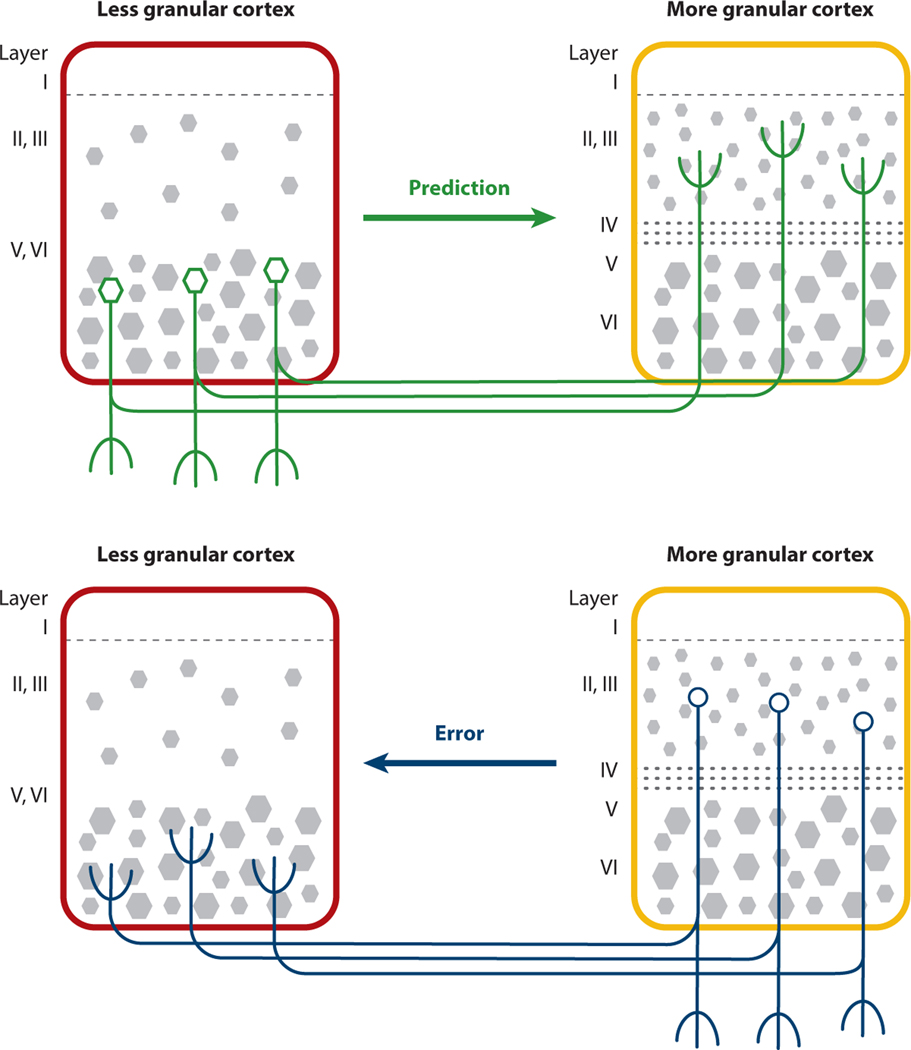Figure 3.
A cytoarchitectural gradient of predictive processing in the cerebral cortex. The cerebral cortex contains a cytoarchitectural gradient that describes its layered (i.e., laminar) organization. At the top of the predictive end of the gradient, neurons are organized into columns of four layers, which is the lowest degree of laminar differentiation, referred to as agranular cortex (e.g., the subgenual anterior cingulate cortex, the posterior orbitofrontal/ventral anterior insular cortex, and the entorhinal cortex). At the other end of the gradient, neurons are organized into columns of six distinct and well-defined layers, referred to as granular cortex; the most differentiated cortical areas (called koniocortices) are primary visual, auditory, and somatosensory cortices. Dysgranular tissue is intermediate in laminar differentiation (e.g., midanterior cingulate cortex). Research shows that the top of the predictive hierarchy in the cerebral cortex begins in agranular cortical regions (Barbas 1986, 2015; also see Chanes & Barrett 2016). Visceromotor and skeletomotor prediction signals begin as highly compressed, low-dimensional (i.e., abstract or conceptual) representations that become more particularized as they descend to the brainstem as motor predictions. Copies of those signals become more particularized as they cascade along the cytoarchitectural gradient in the cerebral cortex to the most granular areas as sensory predictions. Prediction errors are hypothesized to flow in the opposite direction. This hypothesis is consistent with functional evidence that brain activity is organized along a similar gradient (e.g., Katsumi et al. 2021 and references therein, Zhang et al. 2019). Figure adapted with permission from Hutchinson & Barrett (2019).

